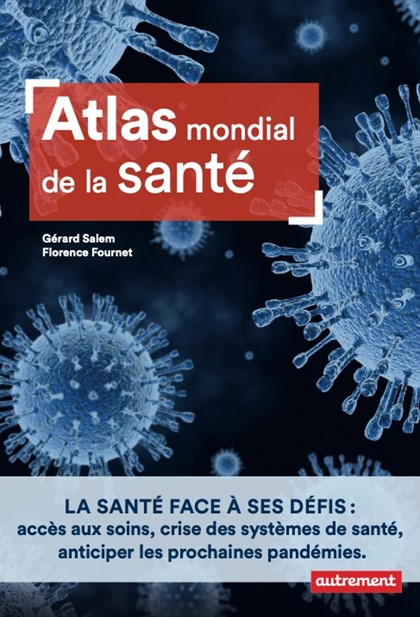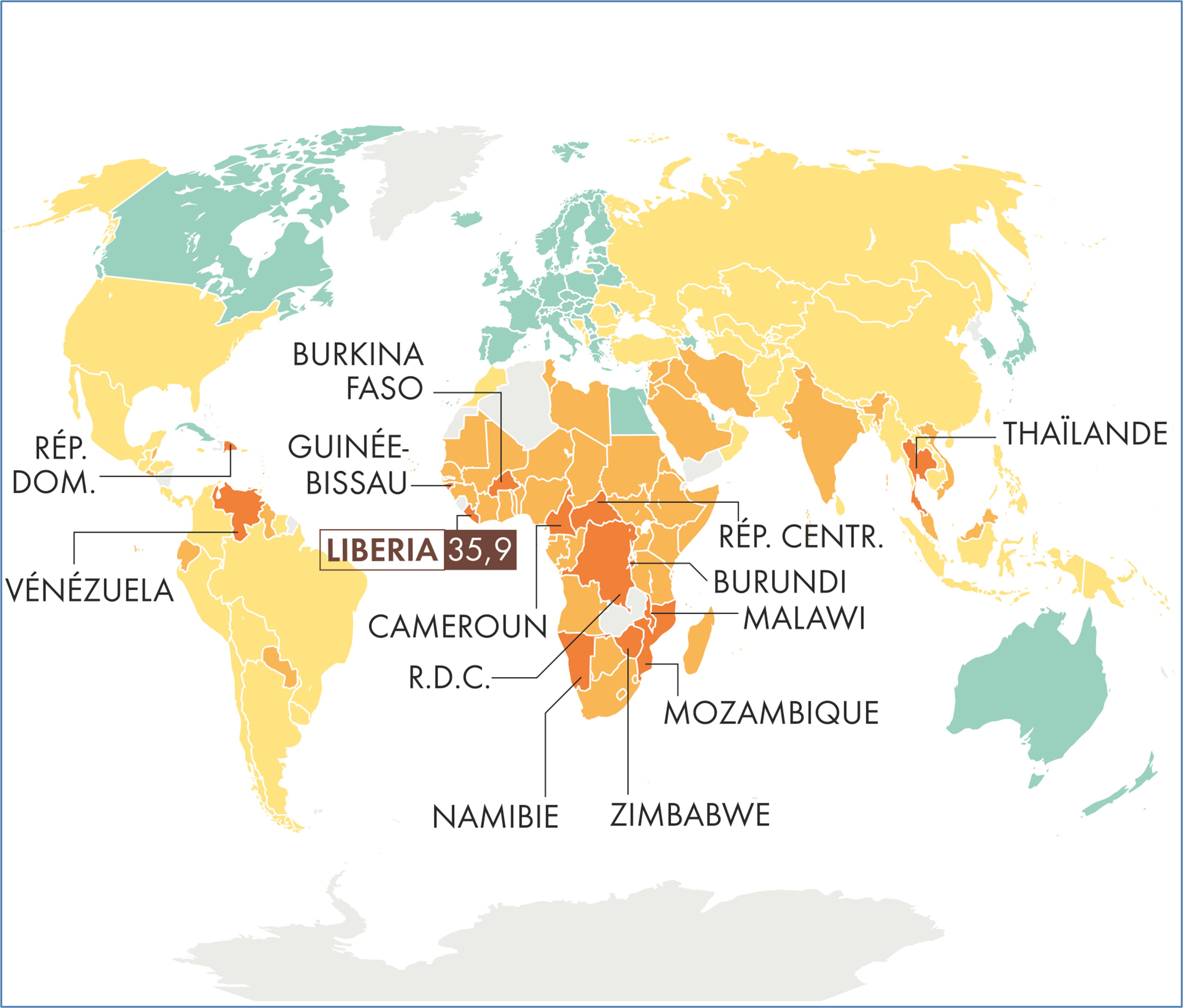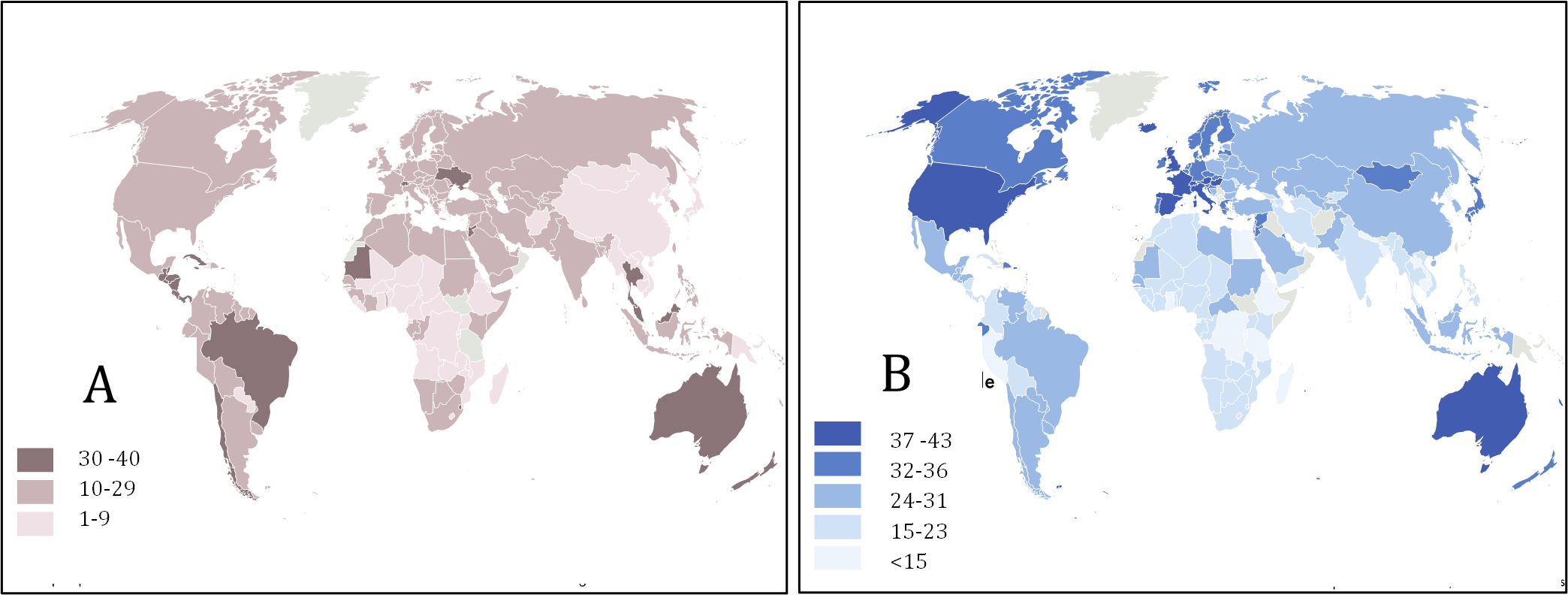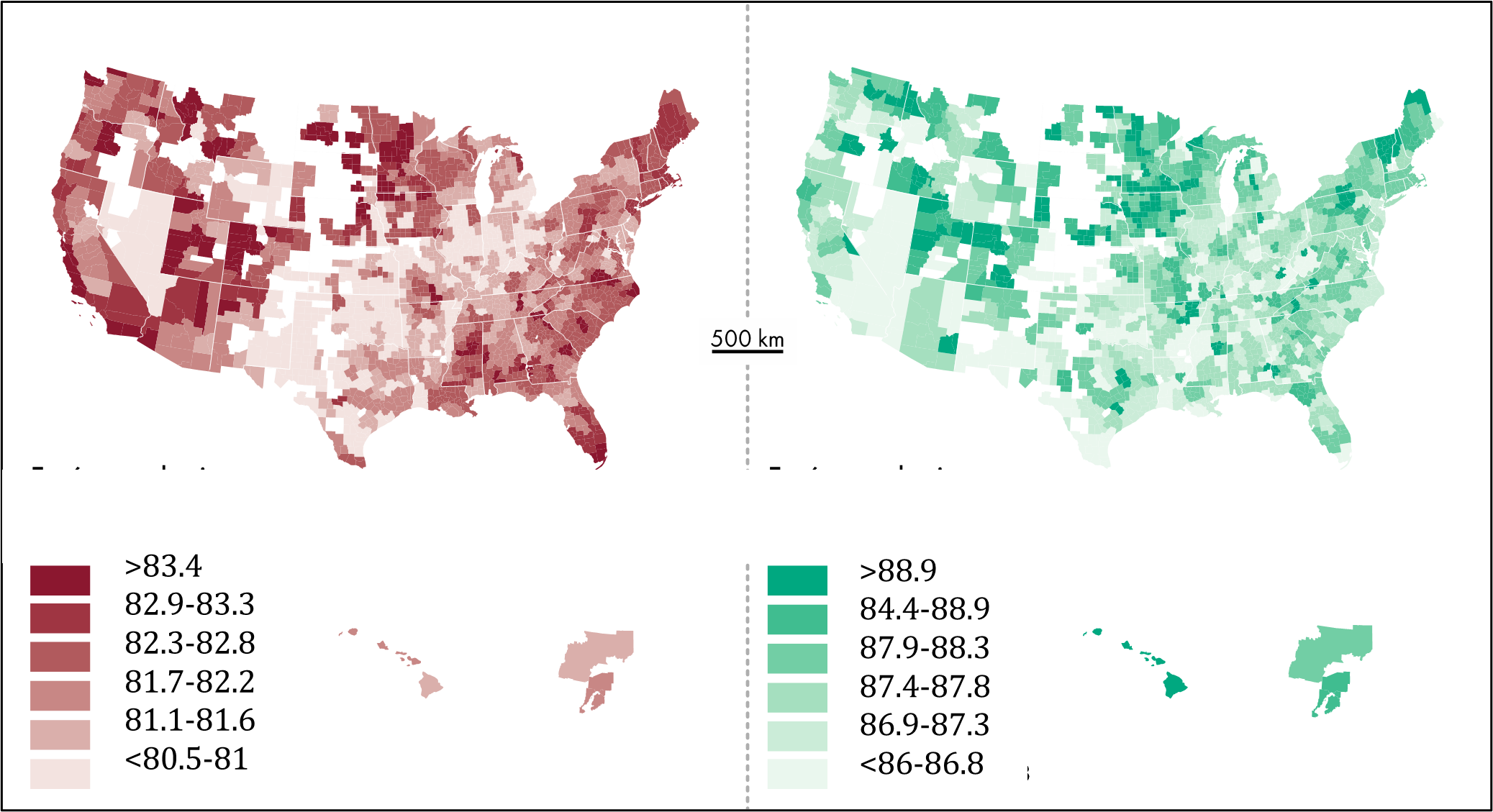One Health Newsletter
World Health Atlas
 Healthcare Facing its Challenges: Healthcare Access, Healthcare System Crisis, and Anticipating Pandemics
Healthcare Facing its Challenges: Healthcare Access, Healthcare System Crisis, and Anticipating Pandemics
By Gérard Salem and Florence Fournet (in French)
Book Review
Author
JP Gonzalez
Department of Microbiology & Immunology
Division of Biomedical Graduate Research Organization, School of Medicine, Georgetown University, Washington D.C.
Acknowledgment: The author recognizes the Publishing company, Editions Autrement (Paris, France), for the reproduction of the front page and figures of the World Health Atlas book.
Health Geography is the relationship between geographic factors and disease. It resides in the application of geographic information, perspectives, and methods to the study of health, disease, and health care. With mobility and international trade and commerce, this science is becoming increasingly important in the context of public health and research.
Health geography uses transdisciplinary approaches to study health in synergy with social, medical, and environmental sciences. In this book, “Healthcare facing its challenges: Healthcare Access, healthcare system crisis, anticipating pandemics," the authors often refer to the multiple approaches of One Health in a geographical context, including distribution of vector transmitted diseases, epidemiological transitions, and outbreak responses. The "Autrement" editor presents an exceptional series of atlases. This time, in this publication, the editor offers a remarkable World Atlas of Health that provides a current panorama of geographical inequalities in health without being exhaustive. The work is composed of four parts.
First, in a synthetic and didactic introduction, the authors of the textbook recall the origins of Health Geography and fundamentals enunciated by great ancients such as Hippocrates with his treatise on Airs, Waters, and Places, and other more recently, like Maximilien Sorre1 or Leonhard Ludwig Finke2. The authors present the fundamental concepts, methods, and tools of this discipline and warn against misuse, especially from the point of view of misleading ecology, which uses different space and time scales.
Second, this illustrated approach deals with the global scale (i.e., covering a large area or small-scale map) at the finest scales (i.e., covering in detail a small area or, by definition, a large scale). The indicators used are varied, including classic mortality measures, nutritional status, morbidities, health expenditures, road accidents (Figure 1), and drug consumption.
Figure 1: Worldwide distribution of road accidents.
Legend: Mortality rate per 100,000; dark orange >30; orange = 20 to 29.9; yellow = 10 to 19.9; green <10 (Source: WHO, 2016)
The use of these maps provided an opportunity for the authors to stress that whether or not there is geographical determinism (i.e., no fatality due to a poor health situation). Fatalities within a region can be compared to the level of access to preventive care within that region. Conclusions can be drawn whether specific regions are receiving unequal or discriminatory care. More fundamentally, the authors show that action on health determinants (environment, hygiene, education, housing, and social inequalities) is the most effective and least costly approach than any other curative measure.
Third, changing scales, the authors illustrate sub-national inequalities by measuring the differences between regions and city neighborhoods through various indicators. They underline the links between spatial arrangements and health dynamics, which is true in Brazil, the United States, China, and France when we consider, as examples, sweetened beverage and dietary fats in the respective countries (Figure 2).
Figure 2: Global contribution of sweetened beverages (A) and dietary fats (B) in the daily diet.
Legend: Grey= No data; 2A. Sugar Serving Teaspoon Number (WHO recommends <6 a day); 2B. Contribution of fats in total food consumption, expressed as a percentage.
(Sources: ISO, International Sugar Organization; FAO, Statistic Division 2010: Food balance sheets.)
The authors develop the critical concepts of socio-spatial health disparities and socio-territorial constructions of health. Geographic variations in health are the translation of social and territorial factors. The health interdependence between related spaces (geographic areas) is a function of geographic continuities and discontinuities.
The book also highlights the significant challenges ahead, often related to climate change, biodiversity loss, pollution, pesticides, economic productivism, and the reinforcement of social and territorial inequalities at all spatial scales (Figures 3A and 3B).
Fourth, the authors underline the new risks of emergence and pandemic spread of infectious diseases. The current COVID-19 pandemic illustrates the need to develop a One Health approach and analyze the close interactions between animal, human, and environmental health.
Figure 3. Life expectancy for women: 3A, in the lowest income quartile; 3B, in the highest income quartile.
Legend: Standardized values according to "race and ethnic origin".
Sources: The Association Between Income and Life Expectancy, USA.
The examples given on Ebola virus disease, plague, rabies, or arboviruses are most convincing. Among these threats, the figure presented on the risks of antibiotic resistance and the emphasis on using antibiotics for intensive breeding of domestic animals is noteworthy.
In conclusion, the authors underscore the necessity of global governance of health, decompartmentalization of disciplines, and cooperation between researchers and decision-makers as advocated in the One Health concept.
References
- Sorre M. Les Fondements de la géographie humaine, t. 1 Les Fondements biologiques, Paris, Armand Colin, 1943.
- Fraatz P. The Westphalian physician Leonhard Ludwig Finke (1747-1837) as founder of a medical-practical geography. Sudhoffs Archiv für Geschichte der Medizin und der Naturwissenschaften. 1941; 34 (H.1/4): 97-104.
- World Health Organization, Global Status Report on Road Safety 2018, Genève, WHO ; 2018.
- ISO, International Sugar Organization: http://isosugar.org: Last visit December 22, 2020.
- FAO, Statistic Division 2010 and Food balance sheets: http://www.fao.org/home/fr/. Last visit December 22, 2020.
- Chetty R, Stepner M, Abraham S, et al. The Association Between Income and Life Expectancy in the United States, 2001-2014 [published correction appears in JAMA. 2017 Jan 3;317(1):90]. JAMA. 2016;315(16):1750-1766. doi:10.1001/jama.2016.4226.
Next story: Zoonoses in Ethiopia


